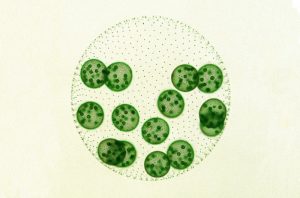Enter your address to receive notifications about new posts to your email.
Articles tagged Evolution
(108 results)
-
An updated tool for finding the footprints of selection
diploS/HIC uses machine learning to identify selective sweeps in unphased data. A set of footprints can tell us a lot about the creature that left them—without requiring us to see the creature itself. Footprints can suggest the animal’s size, weight, and stride, and from there, we can extrapolate even more information. Much like soft sand…
-
#PEQG18 in Haiku
Attendees of the Population, Evolutionary, and Quantitative Genetics Conference are a creative bunch. Inspired by one of the PEQG Bingo challenges, they bombarded Twitter with more than 50 #PEQG18 haikus (and one limerick), providing poetic snippets of the meeting to those who couldn’t make it. Joining the 17-syllable summaries were fantastic sketch notes of the meeting by…
-
A splice in timeless
Photosensitive alternative splicing of a malt fly circadian clock gene varies between northern and southern populations. Over the course of a day, most organisms undergo profound changes. Over the course of a season, the changes can be even more dramatic. For example, insects’ responses to the brisk nights and cooler days of fall and winter…
-
Unmasking an elusive Daphnia disease
After 60 years of mystery, researchers have identified the pathogen responsible for White Fat Cell Disease. Water fleas of the genus Daphnia have long been critical tools for studying the ecology and evolution of host-pathogen interactions, but one of their natural pathogens has remained mysterious for more than six decades. In the 1950s, Daphnia magna…
-
2018 Crow Award finalists presenting at #PEQG18
We are delighted to announce the finalists for the James F. Crow Early Career Researcher Award! All finalists will speak at the Crow Award session of the Population, Evolutionary, and Quantitative Genetics Conference on May 14, 2018 in Madison, Wisconsin. The Award honors the legacy of James F. Crow, whose contributions to the field of…
-
Enter the #PEQG18 T-shirt design contest!
Get creative for the Population, Evolutionary, and Quantitative Genetics Conference. Show your creative side, and inspire the population, evolutionary, and quantitative genetics community by entering the #PEQG18 T-shirt design contest! The winning entry will be used on official conference T-shirts available for sale at the Population, Evolutionary, and Quantitative Genetics Conference, to be held…
-
On the origin of germ cells
Recent evolution of simple germ–soma division in a green alga sheds light on the early stages of complex multicellular life. Among evolution’s greatest innovations are germ cells. These specialized reproductive cells—familiar to us as sperm and eggs in humans—set the stage for complex multicellular life because they free up all the other cells in the…
-
Tales told by ancient human DNA
Archaeologists have long known how to extract millennia-old stories from a single tooth buried in an ancient ruin—and now geneticists have the tools to join them. Advances made in the last several years have enabled researchers to sequence tiny amounts of DNA preserved in very old specimens, such as the material inside a tooth from…
-
Hyper-conserved sperm proteins can still evolve rapidly
The fastest-evolving genes in eukaryotes commonly encode reproductive proteins—and the rate at which genes for male reproductive proteins change, in particular, often vastly outstrips the rate of change across the genome as a whole. A recent paper in G3: Genes|Genomes|Genetics describes an unusual exception: the amino acid sequences of the most abundant sperm proteins in…
-
A fly that thrives on a deadly diet
When a noni fruit ripens, it stinks like old cheese—or even vomit. Familiar to many in the form of expensive juices sold as health supplements, this pungent fruit is engaged in a slow-motion arms race with would-be insect pests. Fruit flies are unable to feast on noni—scientific name Morinda citrifolia—because the fruit is dosed with…
-
Random Factors: An Interview with 2017 Thomas Hunt Morgan Medal Recipient Richard C. Lewontin
The Thomas Hunt Morgan Medal is awarded to an individual member of the Genetics Society of America for lifetime achievement in the field of genetics. It recognizes the full body of work of an exceptional geneticist. The 2017 recipient is Richard C. Lewontin, whose contributions and influence have profoundly shaped the field of evolutionary genetics.…










![Image by Michael Hermann (Own work) [CC BY-SA 3.0], via Wikimedia Commons.](https://s36063.pcdn.co/wp-content/uploads/2018/01/Webp.net-resizeimage-19-300x225.jpg)
